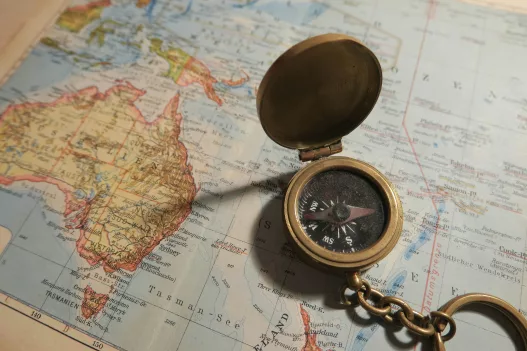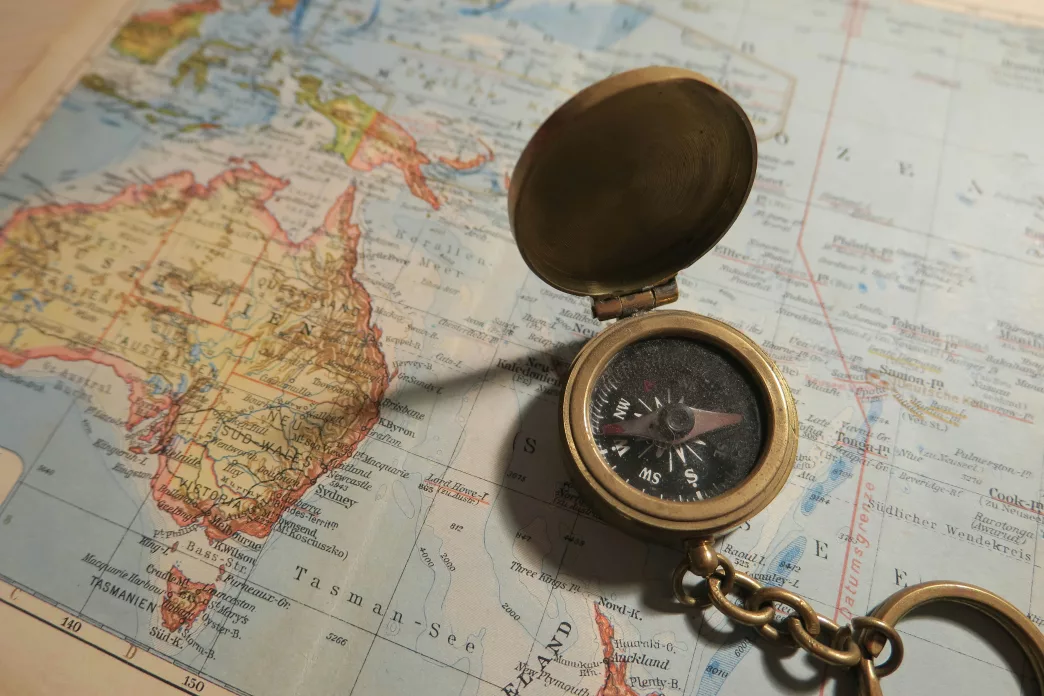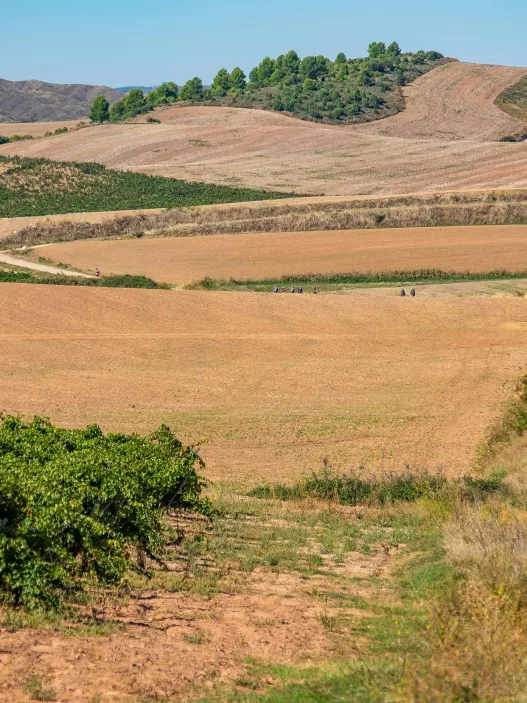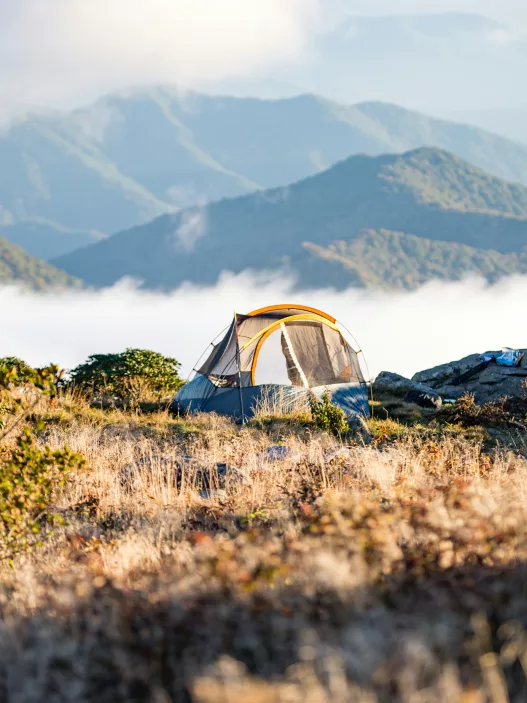Navigating using a map and compass is a fundamental skill for any outdoor enthusiast. Whether hiking through dense forests or exploring vast landscapes, understanding how to read a map and use a compass can significantly enhance safety and enjoyment. Mastering these skills allows individuals to locate their position, plan routes effectively, and remain oriented in the wilderness.
A map is a detailed representation of an area, providing essential information such as landmarks, trails, and elevation changes. Coupled with a compass, which points towards magnetic north, these tools enable adventurers to interpret their surroundings accurately and make informed decisions. Gaining confidence in using a map and compass not only promotes self-reliance but also cultivates a deeper appreciation for the natural world.
For those prepared to engage with this essential skill set, the process may seem daunting but is achievable with practice and patience. This guide aims to simplify the principles of navigation, offering practical tips and techniques that will empower readers to navigate confidently.
Understanding Maps
Maps are essential tools in navigation, providing visual representations of geographical areas. Familiarity with different types of maps, scales, and symbols is crucial for accurate interpretation.
Map Types and Scales
Maps come in various types, each serving specific purposes.
- Topographic Maps: These display the physical features of an area, including elevation changes.
- Road Maps: Designed primarily for driving, they show highways, roads, and significant landmarks.
- Thematic Maps: Focused on specific themes, such as population density or climate patterns.
The scale of a map indicates the relationship between distance on the map and actual distance on the ground. Commonly expressed as a ratio (e.g., 1:50,000), a smaller scale means greater detail but covers less area. It’s crucial to choose the right map type and scale based on the intended use.
Reading Topographic Symbols
Topographic symbols represent various natural and man-made features. Each symbol has a specific meaning, which must be understood for effective navigation.
Common symbols include:
- Water Bodies: Shown as blue lines or shapes.
- Roads and Trails: Depicted using solid or dashed lines.
- Built Structures: Often represented with squares or rectangles.
Familiarity with these symbols enables a clearer understanding of the map’s content. Most topographic maps include a key or legend, which outlines the meaning of each symbol.
Interpreting Contour Lines
Contour lines connect points of equal elevation, illustrating the terrain’s shape and steepness. The closeness of contour lines indicates gradient.
- Close Lines: Suggest steep slopes.
- Wider Spaced Lines: Indicate gradual slopes.
Closed loops represent hills, while lines that form V shapes point to valleys. Understanding these features helps in visualising the landscape, crucial for outdoor navigation. Contour intervals, specified in the map’s key, define the elevation difference between adjacent lines, further aiding interpretation.
Choosing a Compass
Selecting the right compass is crucial for effective navigation. It is important to understand the various types, features, and accuracy levels to make an informed decision.
Types of Compasses
There are several types of compasses, each suited for different purposes.
- Adjustable Compass: Ideal for orienteering and field use; it allows for correction based on magnetic declination.
- Baseplate Compass: Features a flat base, making it useful for map reading. It often includes a ruler and a sighting mirror.
- Sighting Compass: Equipped with a sighting mechanism, this compass allows for precise bearings and is ideal for navigating in rugged terrain.
- Digital Compass: Offers electronic features, including GPS integration. It may be less reliable in remote areas without battery power.
Understanding these types helps the user select the most appropriate compass for their needs.
Compass Features
Key features should be considered when choosing a compass.
- Luminescence: Essential for night navigation, some compasses have glow-in-the-dark components.
- Clinometer: Useful in mountainous regions, it measures the angle of slopes.
- Mirror for Sighting: Provides accuracy by allowing the user to align the compass with distant landmarks.
- Ruler or Scale: Assists in distance measurement on maps, ensuring better planning for routes.
These features enhance usability and improve navigation efficiency.
Compass Accuracy
Accuracy is vital for successful navigation. The following factors affect compass accuracy:
- Magnetic Declination: This is the angle between magnetic north and true north. Adjusting for declination ensures more precise navigation.
- Interference: Metal objects, electronic devices, and natural anomalies can disrupt compass readings. Users should be aware of their surroundings.
- Calibration: Regularly checking and calibrating the compass improves its reliability. Some compasses offer calibration features.
Understanding these accuracy factors empowers users to navigate more confidently and effectively.
Fundamentals of Navigation
Effective navigation relies on understanding how to read maps, use a compass accurately, and apply triangulation techniques. Mastering these skills enables individuals to navigate confidently in diverse environments.
Orienting the Map
Orienting a map is the process of aligning it with the physical landscape. This ensures that north on the map corresponds with true north in the environment.
To orient a map, the individual should:
- Place the map flat with the top pointing towards their position.
- Use a compass to locate north.
- Rotate the map until the north on the map aligns with the magnetic north indicated by the compass.
This technique allows individuals to recognise landmarks, plan routes, and maintain an understanding of their surroundings.
Using the Compass
A compass is an essential tool for navigation, helping users determine direction. Understanding its components is critical.
The main parts of a compass include:
- Base Plate: Helps with map reading.
- Needle: Points to magnetic north.
- Azimuth Ring: Enables users to set specific bearings.
To use the compass effectively, one should hold it level and away from metallic objects. By aligning the compass needle with the azimuth ring, the individual can follow a specific bearing. Regularly checking the heading during travel helps maintain the intended direction.
Triangulation Technique
Triangulation is a method that determines one’s position using landmarks and a map. By observing at least three known landmarks, an individual can accurately plot their location.
The process involves:
- Identifying at least three prominent landmarks visible from their position.
- Taking compass bearings of each landmark.
- Transferring these bearings onto the map.
Where the lines from each bearing intersect indicates the individual’s location. This method is particularly useful in areas without clear paths or when navigating in conditions where visibility is limited.
Planning Your Route
Creating a well-defined route is crucial for navigation success. Two key aspects to consider are setting waypoints and estimating travel time.
Setting Waypoints
Waypoints are specific locations marked on a map that guide navigation. They can be used as checkpoints along a route. To set waypoints, the navigator should first determine significant locations based on their objective.
Steps to set waypoints:
- Identify clear objectives: What are the key locations along the journey?
- Use features in the terrain: Landmarks like rivers, mountains, or intersection points can serve as effective waypoints.
- Record precise coordinates: Use your compass or GPS to note down the exact latitude and longitude.
Using a systematic approach assists in avoiding potential hazards or deviations during the journey.
Estimating Travel Time
Estimating travel time is essential for realistic planning. This involves gauging the time required to traverse distances between waypoints effectively.
Considerations for estimating time:
- Terrain type: Difficult terrains will require longer traversal times.
- Pace: An average walking speed is about 4 km/h on flat terrain. Adjust this based on personal fitness levels and load.
- Track conditions: Wet, muddy, or rocky paths can significantly slow progress.
A simple calculation can be made by measuring the distance on the map and applying the expected travel pace. This method ensures a more accurate arrival time at each waypoint.
Navigating in Different Terrains
Different terrains present unique challenges and require specific strategies for effective navigation. Understanding these variables can significantly enhance a navigator’s ability to traverse various landscapes.
Navigating in Forests
In forested areas, dense tree cover can obscure visibility and hinder navigation. Navigators should focus on establishing reference points such as distinct trees or rock formations.
Using the compass, they can determine their bearings relative to these landmarks. It is also beneficial to use a map to identify trails or clearings.
When the visibility is low due to foliage, pacing becomes critical. Measuring distance with consistent strides helps maintain an accurate sense of direction and the distance travelled.
Mountain Navigation
Mountain navigation often involves steep inclines and variable weather conditions. A compass is essential for maintaining a consistent bearing, especially in challenging visibility.
Using topographical maps, navigators can identify contours, peaks, and valleys to plan their route effectively. It is crucial to understand the effects of altitude on weather conditions, as temperatures can drop and storms may roll in quickly.
Those navigating mountains should also employ the technique of “sighting” on prominent features. This practice aids in confirming their position while progressing towards their destination.
Desert Navigation
Navigating in a desert requires different considerations due to vast, open spaces and changing terrain. Sun positioning is a key factor; navigators can use it to maintain their direction during daylight hours.
A compass is still vital but should be used in conjunction with landmarks like dunes or rock formations. Since distances can appear misleading in a desert, pacing should incorporate regular checks against the map.
Night navigation can also be effective, as stars serve as reliable navigational aids. Understanding how to read the constellations can provide confidence in orientation when the sun is no longer visible.
Advanced Navigational Techniques
Navigating effectively under challenging conditions requires advanced skills. These techniques enhance outdoor navigation, especially during night-time, low visibility situations, or when using modern technology.
Night Navigation
Night navigation involves using the stars, moon, and other celestial bodies to determine position and direction. Knowing constellations is vital; the North Star (Polaris) is a reliable reference in the Northern Hemisphere.
To navigate at night:
- Assume a steady walking pace for consistent direction.
- Use a red light to preserve night vision while reading a map or compass.
- Carry a headlamp for clarity but use sparingly to maintain awareness of surroundings.
Practising this technique on clear nights boosts confidence and accuracy.
Navigating with Limited Visibility
Encountering fog, heavy rain, or snow requires specific adjustments. Visibility may be reduced, but navigational methods can still be effective.
Key strategies include:
- Relying on landmarks that are distinguishable at close range.
- Using a compass bearing to maintain a straight line; periodic checks ensure adherence to the intended path.
- Employing sound cues like water flow or wind patterns to gauge location.
Preparation and familiarity with the environment help mitigate risks associated with low visibility scenarios.
GPS and Electronic Aids
While traditional methods are essential, GPS and electronic navigational tools offer significant advantages. They provide precise positioning and routing information.
Important points regarding GPS usage:
- Ensure devices are charged and working before departure as battery life can diminish during prolonged use.
- Understand limitations, such as signal loss in deep valleys or dense forests.
- Combining GPS with traditional techniques reinforces navigational skills and builds redundancy.
Familiarity with the technology increases efficiency and helps navigation remain reliable, even in unfamiliar territories.
Maintaining Your Direction
Keeping the intended direction is crucial during navigation. It requires ongoing adjustments and attention to surroundings to ensure the chosen path is followed accurately.
Staying on Course
To maintain a steady course, the navigator must regularly check the compass bearing against their planned route. One method is to identify prominent landmarks in the environment. This can help in confirming whether the intended direction is being followed.
Using a technique called “aiming-off” can also assist in staying on course. This involves setting a bearing slightly off the desired line, allowing for corrections when approaching a known feature. Maintaining awareness of any changes in the terrain will help identify deviations from the path. Regularly checking the map against the landscape solidifies the understanding of one’s position.
Managing Deviations
When a deviation from the intended course occurs, it is important to assess and correct quickly. Small deviations can often be rectified by adjusting the bearing slightly back towards the target.
If a significant deviation is noticed, the navigator should stop and evaluate their location using the map and compass. Identifying one’s current position relative to landmarks is essential. Once the correct bearing is established, the navigator can resume the journey.
It’s also helpful to continuously scan the environment for feedback on direction. Utilising techniques such as pacing can provide additional guidance. This helps in ensuring the desired direction is accurately maintained, regardless of the challenges presented by the terrain.
Safety and Preparedness
Navigating with a map and compass requires an understanding of various safety protocols and preparedness strategies. Being equipped to handle emergencies, considering weather conditions, and having essential survival skills are key components for a safe experience outdoors.
Dealing with Emergencies
In case of an emergency, having a well-prepared plan is crucial. One should carry a first-aid kit containing essential supplies, such as bandages, antiseptic wipes, and pain relief medication. Knowing basic first-aid procedures, like how to treat cuts or sprains, can save lives.
It is also wise to establish a communication plan. Carrying a mobile phone with a portable charger or a satellite communicator ensures contact with emergency services. Calibrating a map with known landmarks helps in quickly identifying your location.
Staying calm is vital during any emergency. Using the map and compass aids in navigation to safer areas. Practising these scenarios can also help one feel more confident and prepared.
Weather Considerations
Weather plays a significant role in outdoor navigation. Understanding weather patterns and reading forecasts is essential before heading out. Conditions can change rapidly, impacting visibility and trail safety.
Always check current forecasts and prepare for sudden shifts. Carry waterproof clothing and insulating layers, as temperatures can drop quickly. High winds or heavy rain can make navigation challenging.
When navigating in fog or snow, one should be cautious. In such conditions, it helps to use the compass more frequently to ensure direction is maintained. Proper weather preparation is fundamental for any safe journey.
Survival Skills
Possessing basic survival skills can make a significant difference in an emergency. One should know how to build a shelter quickly using natural materials found nearby. This can provide protection against the elements.
Finding a water source is equally important. Knowing how to purify water by boiling or using a filter ensures access to safe drinking water. Foraging for food can also be life-saving; learning to identify edible plants is beneficial.
Practising these skills regularly enhances confidence and increases the likelihood of survival in a challenging situation. Familiarity with the environment accelerates decision-making in emergencies.









